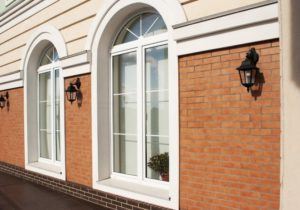Things to Consider If You Want Eco-Friendly Windows
 If you lose or gain heat through your windows, replacing them with more energy-efficient windows could save you as much as 25 or 30 percent on your heating and cooling bills. Caulking windows, adding window treatments, and adding solar control film can help lower these bills to some extent, but new windows will make more of a difference.
If you lose or gain heat through your windows, replacing them with more energy-efficient windows could save you as much as 25 or 30 percent on your heating and cooling bills. Caulking windows, adding window treatments, and adding solar control film can help lower these bills to some extent, but new windows will make more of a difference.
For the most savings, consider the following things.
Consider the Insulative Properties of the Different Frame Types
Wood frames tend to perform best for limiting heat transfer through windows, while aluminum frames typically perform the worst. Vinyl, composite, fiberglass, and wood-clad windows fall in between these two extremes. In wet climates, however, wood or wood-clad frames can be prone to rotting from all of the extra moisture.
Think About Whether the Frame Material Is Eco-Friendly
Wood frames are the most environmentally-friendly, followed by aluminum, because the first is a renewable resource and you can recycle the second. While vinyl, composite, and fiberglass frames are not as easy to recycle, they typically perform better than aluminum. Of these three, fiberglass lasts longer and is less energy-intensive to make.
Opt for Double-Paned Windows
Single-paned windows are not as energy-efficient as double-paned windows because the space between the two layers of glass adds extra insulating properties. Although triple-paned options exist, the added energy-efficiency does not typically justify the much greater expense, and they may interfere with light transmittance and visibility.
Consider Carefully the Different Types of Fill
Double-paned windows filled with some type of gas limit energy bills more than single-paned windows. The type of gas makes a difference, with heavier gases like argon or krypton improving energy efficiency more than plain air. However, the energy savings may not always justify the added cost of using argon or krypton instead of plain air.
Think About Getting a Low-E Coating
Low-E coatings are see-through coatings that help reflect heat while still allowing light through the glass. In hot climates, these are applicable outside the window, and in cold climates, people apply them to the inside to minimize heat loss. These coatings also limit the transfer of UV light so your furnishings will not fade as quickly.
Ask About the U-factor and Solar Heat Gain Coefficient
These numbers help you compare different options for energy efficiency. The U-factor measures how well a window limits heat loss, while the SHGC measures how much heat enters the home through the glass. The lower the U-factor and SHGC, the better the window can be.
Look for the Right Labels
If you don’t have time to investigate every little part of the window to find the best combination at the best price, at least look for Energy Star and the National Fenestration Rating Council (NFRC) labels, as these indicate that the windows meet the energy-efficiency standards set by the U.S. Environmental Protection Agency (EPA).
Get a Good Installer
If you do not install your new energy-efficient windows properly, they will not bring about the expected energy savings. Use a professional with training and experience installing the type of windows you purchase. Make sure they follow the instructions provided by the manufacturer and do not take any shortcuts.
Look Into Window Coverings
The right window covering will improve a window’s insulating qualities even more. Eco-friendly options include curtains made from organic cotton or hemp and shades made from sustainably harvested bamboo. If you just want light control, consider blinds made from Forest Stewardship Council-certified bamboo or wood.
Contact Arch Design Window & Door Co. to find out more about the options available for energy-efficient, eco-friendly windows. We can help with all of your window and door needs.

